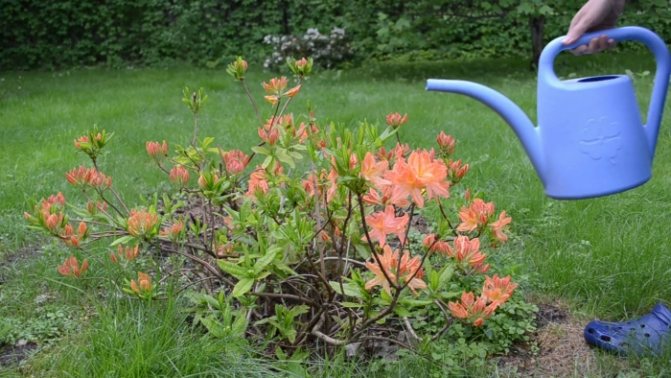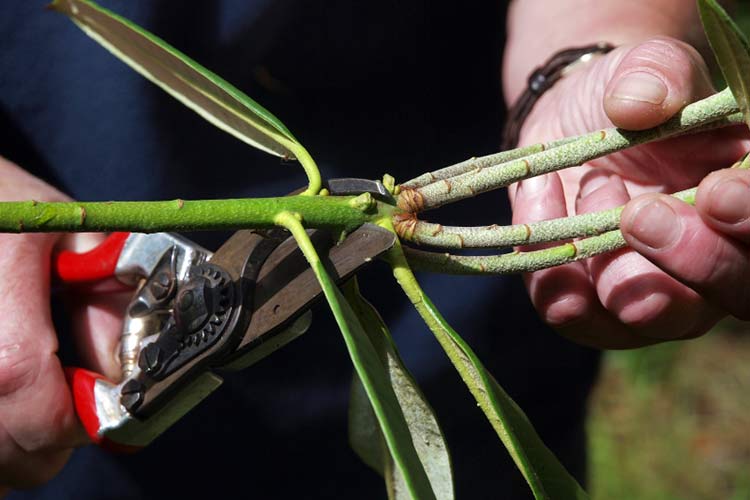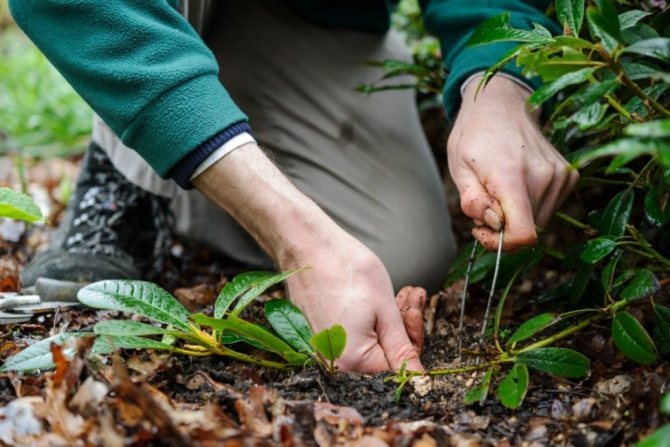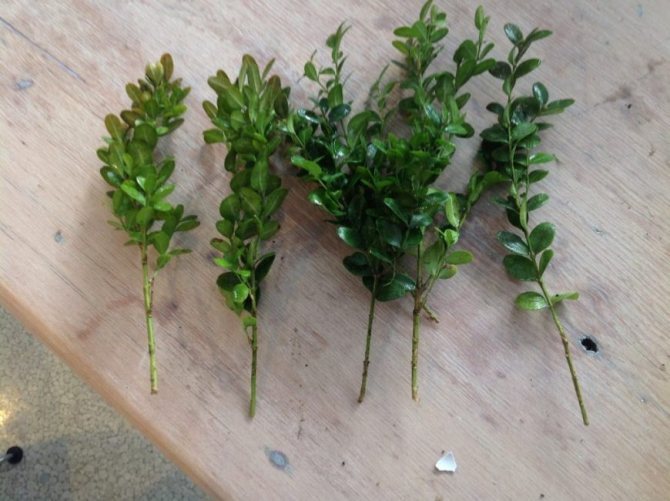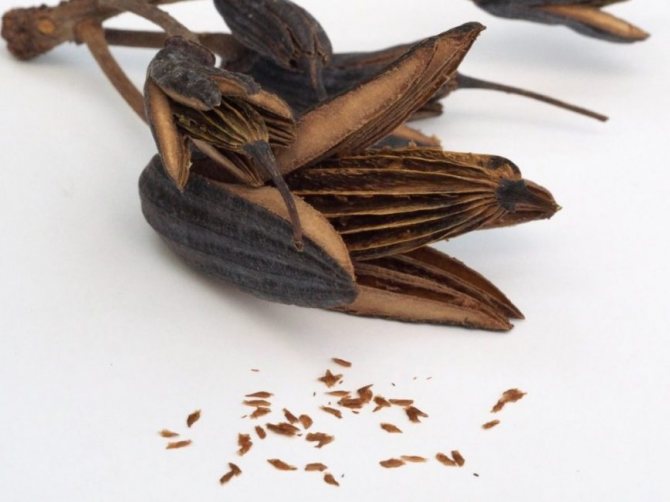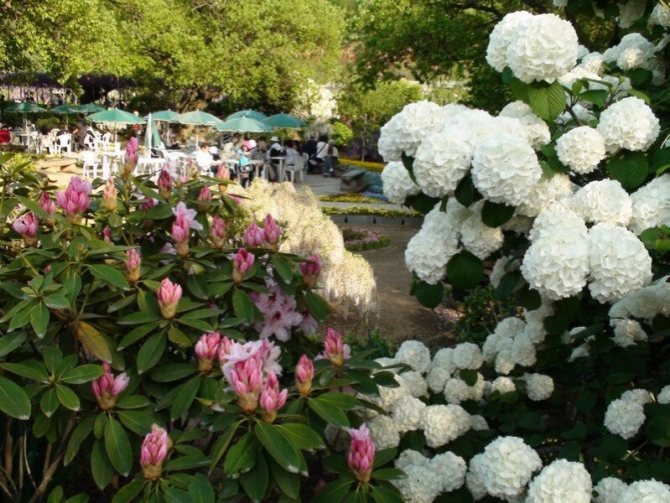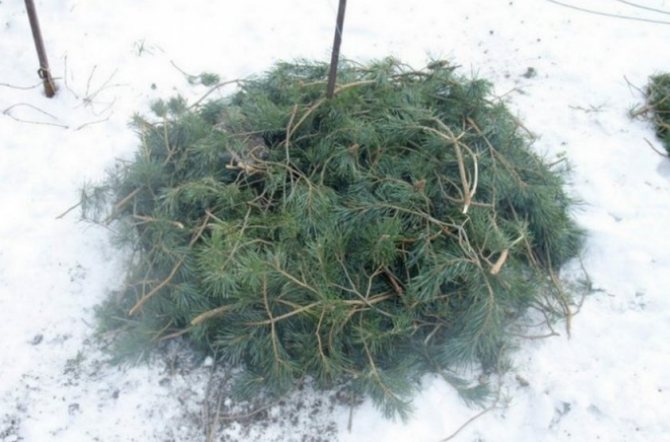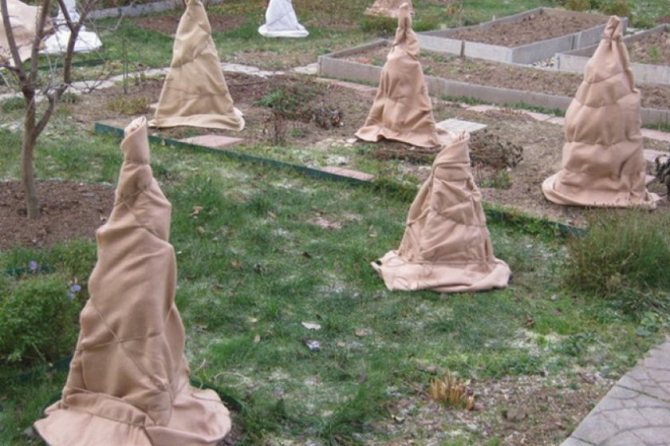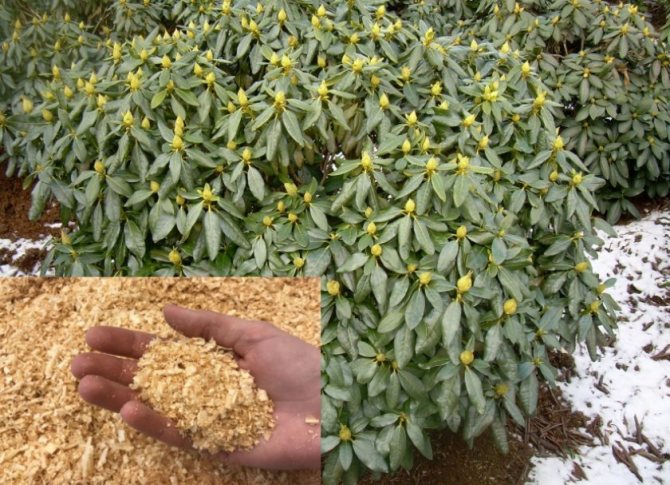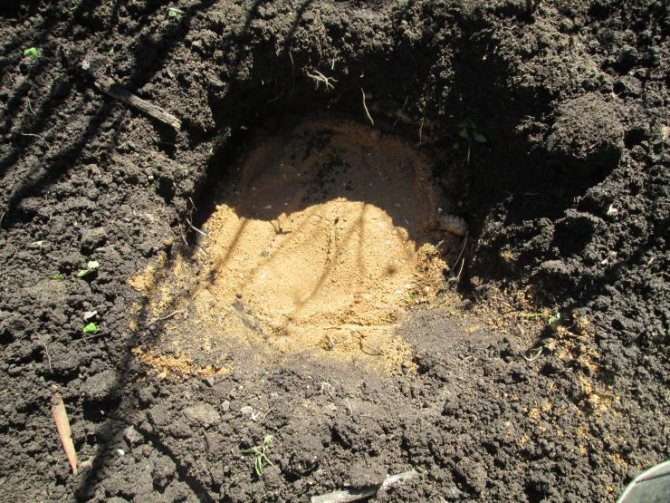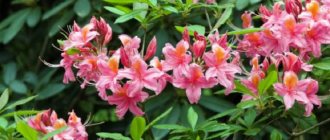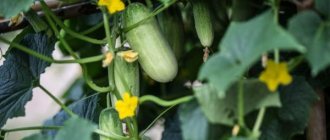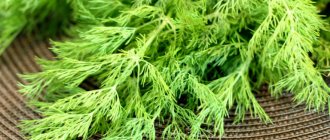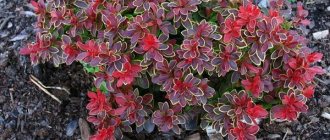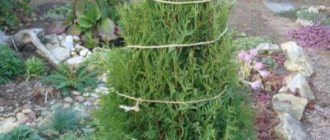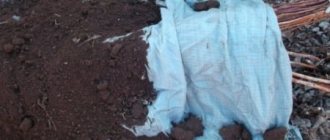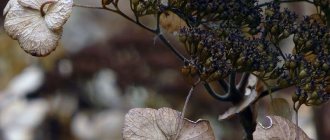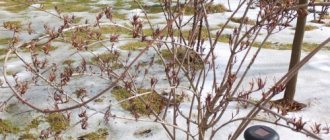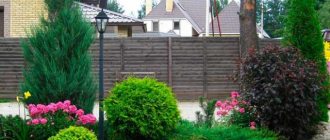Rhododendron (Rhododendron) is a beautiful perennial ornamental plant that can decorate absolutely any garden with its flowers. A large number of its species are deciduous, evergreen shrubs and trees or creeping plants. The shapes and sizes of rhododendrons vary considerably. Some of them are less than 0.5 meters in height, while others reach 4 meters. Despite the variety of species, they all require preparation for winter. To maintain their beauty, these plants need to be well cared for and protected from the cold during the winter.
What to do with rhododendrons in the fall, how to properly prepare for winter
Autumn care for rhododendrons includes the following activities: namely, here's what you will need to do when the bush fades:
- Break out the peduncles.
- Feed.
- Continue watering and acidifying (at the end of autumn, making water-charging watering).
- Perform anti-aging pruning (if necessary).
- Feed again (if not done after flowering).
- Shelter for the winter.
And also rhododendrons can be replanted in autumn.
Moreover, it is necessary to transplant with a large earthen clod, and then mulch well. As for the timing, 3-4 weeks (about a month) should be left before stable frosts.
Video: rhododendron - care after flowering
Video: care for az rhododendron in the fall and preparation for winter
Reproduction methods
You can dilute rhododendron in your area in 3 ways: by seeds, cuttings, layering.
Seeds
To grow seedlings, you need to follow these steps:
- lay drainage at the bottom of the planting container;
- pour the substrate prepared by yourself or the soil for azaleas purchased at the flower shop on top;
- spread the seeds over the surface, sprinkle them with sand;
- cover the structure with plastic wrap or glass.
Seedling care consists in watering as needed, airing a mini-greenhouse. When the first shoots hatch, the shelter is removed.
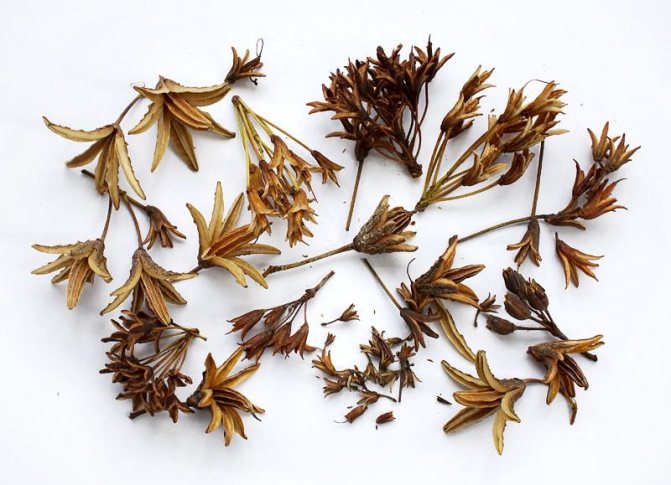
Cuttings
Propagation by cuttings is done as follows:
- the stems are cut into pieces of 5-8 centimeters;
- the lower leaves are cut off;
- the lower parts of the slices are placed in a growth stimulant solution for 12-16 hours;
- cuttings of rhododendrons are planted in boxes with a peat-sand mixture;
- the planting box with stems is covered with foil.
When roots and young shoots are formed on the cuttings, they are transplanted into separate containers. In the fourth year of life, the seedlings are transferred to open ground.
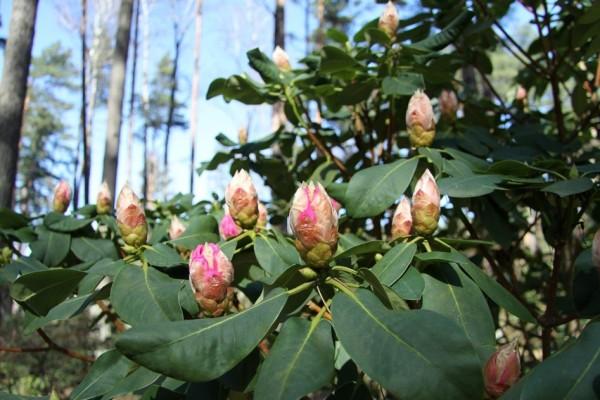

Layers
Reproduction of rhododendron by layering step by step:
- In the spring, bend the lower shoots to the ground, secure the points of contact with pins or bent wire.
- Sprinkle with soil on top, water.
- Tie the upper part of the layer to the support.
- For the winter, cover the pinning site with mulch and spruce branches.
- When the cuttings take root, separate them from the mother plant and plant them separately in a shady place.
After 2 years, the grown plant is transplanted to a permanent place.
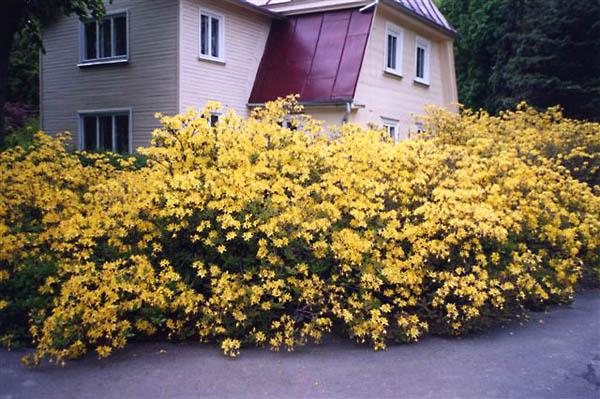

Pruning rhododendron in the fall: when and how to prune
By the way! Pruning is an optional procedure for successfully growing rhododendrons.
However, still something needs to be done, and you need to figure out when and what type of pruning is best done:
- In early spring usually they carry out sanitary pruning - you need to remove all broken, frozen and dry shoots (to healthy wood or completely).
Formative pruning is also carried out in spring.
... In this case, the branches are cut to the dormant buds.
- In the summer after flowering cut off the faded buds (only seed boxes so that the plant does not spend extra energy on reproduction, but in no case the tops of the shoots: they will just start to grow, and then flower buds will form there).
- In autumn usually spend anti-aging pruning shrub, cutting out all old and bare shoots (every few years).
And in the fall, you can remove all the shoots that have dried up over the summer, i.e. carry out sanitary pruning.
Growing features
Rhododendrons are very whimsical and will delight the summer resident with flowering only if they are provided with the necessary conditions.
Common mistakes gardeners make:
- when transplanting, make the hole too deep, large;
- fertilized after planting with manure;
- provide flowers with abundant watering, forgetting about drainage.
Seat selection
To plant rhododendrons, choose a place where they will have enough sun and warmth, but do not forget that flowers love moisture. Wetlands are suitable provided they are equipped with a drainage system.
Top dressing of rhododendron after flowering and in autumn
After the flowering of rhododendrons is over, it's time to feed them with phosphorus-potassium fertilizers, so that the plant can recuperate after abundant flowering and lay many new flower buds.
So, the following can be used as autumn fertilizers for rhododendrons:
- superphosphate + potassium sulfate (potassium sulfate);
- potassium monophosphate;
- special fertilizers for rhododendrons, azaleas, hydrangeas, blueberries.
Remember! In no case should rhododendrons be fed with manure, dung or ash, because these fertilizers reduce the acidity of the soil, which is like death for a plant.
Video: how to feed rhododendrons in the fall
Acidification of the soil under rhododendrons
Rhododendrons are very fond of acidic soil, and if the soil is alkaline, then the plant will grow and bloom badly, and winter.
Protection against diseases and pests
When waterlogged, rhododendrons can be affected by rot. To prevent diseases in spring, plants are sprayed with copper-containing preparations. Affected bushes are sprayed with fungicides. If the rhododendrons are too rotten, they are dug up and burned.
Plantings can be chosen by insects: spider mite, whitefly, false shield, thrips. Insecticides and acaricides are used to control pests. Gastropods are killed with molluscicides or harvested by hand.
Important! When working with chemicals, gloves, goggles and a respirator must be worn.
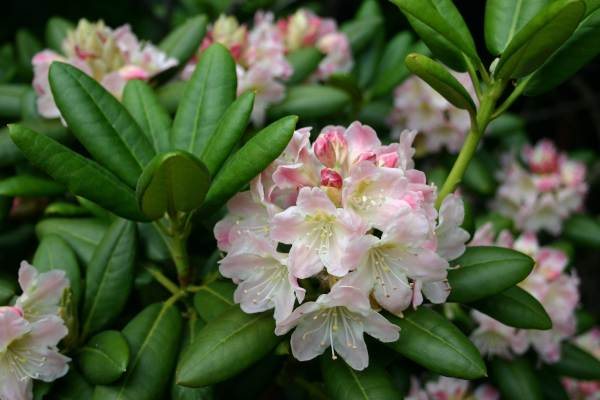

Preparing rhododendrons for the winter: is it necessary to cover for the winter, how and what
Rhododendron, both evergreen and deciduous, is a very frost-resistant perennial plant (flower buds can withstand frosts down to -30 degrees), which does not need a classic shelter for the winter, like the same roses or grapes.
By the way! Deciduous rhododendron is considered even more frost-hardy than evergreen, and it absolutely does not need any shelter (other than mulching young seedlings).
However, newly planted rhododendron bushes are still better covered for the winter. Alternatively, you can mulch the near-trunk circle of rhododendrons, first with sour high-moor peat, and then with coniferous litter from the forest.
Rhododendron or Azalea - a short description of the flower
Rhododendron is a short shrub with dark bark, branches of which reach a length of 2-4 meters. Young shoots are covered with glandular-lowered scales, which disappear in 4 years. The leaves are alternate, with petioles, whole-edged, their length is 2 cm in a young plant and 8 cm in a mature shrub. The sheet has an elliptical shape, tapers towards the base, the edges curl down.
The ornamental value of the plant lies in its flowering. The flowers have a long stalk and are gathered at the end of the branch into a bouquet of 3-5 buds. Corolla - irregular, up to 5 cm in diameter, light yellow with a wide funnel and 5 lobes. The flower has 10 stamens of different lengths. The plant reproduces by seeds, they are small, ripen at the end of August. Growing an adult bush from seeds under normal conditions is difficult. Azalea has a pronounced, pleasant scent of green strawberries.
Garden azalea belongs to the Heather family. This genus is represented by shrubs and trees, deciduous, semi-deciduous and evergreen plants. The genus has more than 1000 species.
In the wild, the plant is common in the following regions:
Shrubs grow well near the seas, oceans, on the slopes of the mountains. They prefer partial shade. Flowers of different species of this genus differ in color, but also in size and shape.
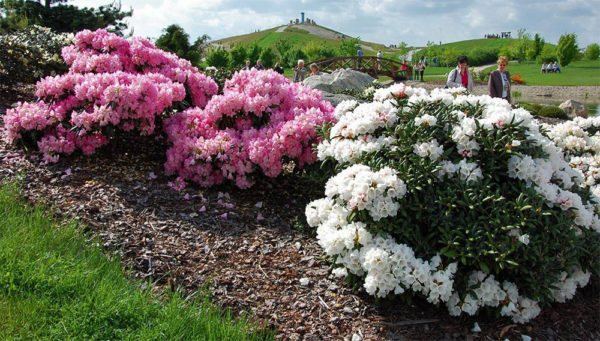

How to cover an evergreen rhododendron for the winter?
Evergreen rhododendrons do not shed their leaves with the onset of winter. For the most part, this species is quite winter hardy, but it is still better to build a shelter for the shrub. Under the weight of the snow cover, delicate shoots and flower buds can suffer, and the burning rays of the spring sun can damage the leaves. Usually, a wooden frame is erected especially for these lush beauties, or, if the bush is short and wide, you can install arcs. On top of this structure, it is necessary to fix a white non-woven covering material (spunbond) with a density of 30.42 or 60 g / m2. It is possible to use less dense material, but under the weight of the snow it can be damaged or torn during dismantling, so you will have to buy a new one next winter.
- Install the frame in advance, before the soil is frozen. With the onset of cold weather, it remains only to cover the structure with spunbond.
- Punch a few small holes on top of the cover material. Then, in the event of a sudden thaw, the leaves and shoots of the rhododendron will not mate.
- Before the first frost, water the rhododendron bush well every 4-5 days (if the fall was not rainy). It will be easier for the plant to prepare for winter and survive frost.
And when do you need to cover the evergreen rhododendron? We have already found out that this shrub has good winter hardiness, therefore, you should wait with the shelter until the temperature drops to -10 degrees Celsius so that the bush does not sputter if warming occurs unexpectedly. But the removal of the covering material should be approached with caution. On the one hand, if you do not open the bush in time, it can undermine, and if you do it ahead of time, the sun's rays will harm the bush no less.
Varieties for the Moscow region
Each region has its own climate characteristics, which makes it possible to develop varieties that will successfully endure the "whims of the weather" and at the same time delight summer residents with a harvest or beauty, as is the case with rhododendrons.
If we are talking about the Moscow region, then preference is given to species that are resistant to frost.
Japanese salmon
With large, red flowers, collected in inflorescences of 6-12 pieces. The variety is resistant to frost, reaches a height of 2 meters.
Costerianum
Flowers in this variety have a different shade - from pale yellow to bright red. It was first bred in the 19th century and quickly gained popularity. It is considered a hybrid of the Japanese. The height of the shrub is from 80 centimeters to 2 meters.
Lights Series
Such a plant will decorate any site, since it is decorative and exotic.Red-orange flowers "crown" bushes 2-2.5 meters high.
Hague
The hybrid, bred in Finland, is highly resistant to temperature fluctuations, suitable for growing in humid climates. Winters well in St. Petersburg. The bush reaches a height of 1.5 meters, its crown is decorated with large inflorescences of pink flowers.
Helsinki
The variety was bred in Finland, the event is timed to coincide with the 350th anniversary of the University of Helsinki. Will delight the summer resident with flowering, which will begin in early June. The shrub will be decorated with pink-red flowers with wavy edges.
Katevbinsky Grandiflorum
Bred at the beginning of the 19th century, the most popular variety. The bush reaches a height of 3 meters, the crown is 3.5 meters in diameter. It is decorated with lilac-pink flowers. The plant prefers well-drained acidic soils and abundant watering.
Purpurkissen
The height of the bush reaches 90 centimeters, the growing season begins in early June. The plant looks good over the surface of the pond and in tandem with conifers.
Canadian
The variety is unpretentious to care for, and due to the blue-blue color of the foliage, it is considered decorative. Blooms for 2 weeks in May. Suitable for planting in shady areas of the garden.
Ledebour
Large flowers of pink-purple color "crown" a shrub 3.5 meters high. The plant begins to bloom at the end of April, this period lasts several weeks.
Yellow
The variety is not picky about the soil. Differs in a height of 1.5 meters and spreading branches. The yellow flowers adorn the shrub and emit a pleasant scent.
Pink
It is resistant to frost, which is undoubtedly considered as an advantage of the variety, but among the disadvantages is the small size of the flowers. Pink inflorescences will complement the site and will delight the summer resident for several weeks, emitting a wonderful smell. Pink rhododendrons are ideal for growing in mid-latitudes.
Vaseya
The variety is unique in that the flowers appear on a shrub 2 meters high before the leaves. They are somewhat similar to the wings of butterflies, they have no smell. The leaves of rhododendrons are purple.
Better to plant the plant in a sunny place; it is a pity that it will not bloom for long - only 2 weeks.
Daursky
Possesses a superficial root system. The variety was bred in China or India, in the 19th century, the peculiarity of the plant is large purple flowers, 4 centimeters in diameter.
Smirnova
"A product of domestic production", the variety was bred and named in honor of the doctor and lover of botany - M. Smirnov. The height of the bushes reaches one and a half meters, the flowers are combined into large inflorescences of a purple hue.
Kashkara
Golden yellow rhododendron, with a bush height of 60 centimeters. The leaves are long, slightly curved at the sides.
Schlippenbach
Rhododendron 2 meters high with flowers resembling bells. Lilac shade, with purple splashes in the middle. At home, the shrub grows up to 4 meters.
Short-fruited
The plant is native to Korea, reaches a height of 80 centimeters, will delight summer residents with white flowers with golden splashes.
Shelter of deciduous rhododendrons for the winter
Deciduous rhododendrons tolerate the frosty winters of the middle lane quite staunchly, but shelter will not hurt them either. The fact is that not so many varieties are able to survive severe frosts in the absence of snow cover, and this happens in our area. So, in order to protect the bushes from possible death, we recommend playing it safe. In this case, you do not need to build complex frames. It is enough just to drive a wooden stake into the ground next to the bush and cover it with a covering cap. Be sure to pay attention to the shelter of the rhododendron root system, which is superficial. The trunk circle should be mulched with peat or pine litter by 15-20 centimeters.When mulching, be sure to indent a couple of centimeters from the trunk, or the bark of your bush will resist by spring.
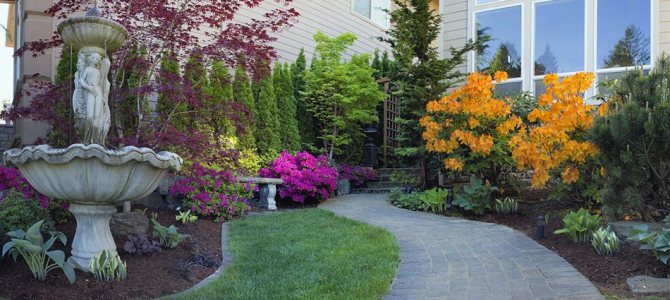

In the wild, rhododendrons are found most often in the northern hemisphere (in southern China, the Himalayas, Southeast Asia, Japan and North America), and therefore are a winter-hardy crop. By the way, this shrub is not rare on the territory of Russia: in the Far East, in Siberia, Karelia and on the Kola Peninsula. However, in the middle lane, winters are not always snowy, therefore strong winds and low temperatures in the absence of good snow cover can harm flower buds, individual shoots, or completely destroy the plant. This is why we recommend not neglecting the bush shelter during the winter months.
The need for shelter of the rhododendron in winter is also influenced by the place you choose for planting. It is not for nothing that conifers are called an excellent neighbor for these shrubs, which are able to protect their delicate crown not only from piercing northern winds: in the shade of spreading firs or pines, rhododendrons are not afraid of spring burns. Of course, the main advantage for planting this heather shrub near conifers is the special composition of the soil in which rhododendrons grow most comfortably. In addition to the benefits, such a neighborhood is a big plus for decorativeness: conifers will serve as an excellent background for both shoots covered with delicate inflorescences and for the unusual foliage of rhododendron during the entire summer season.
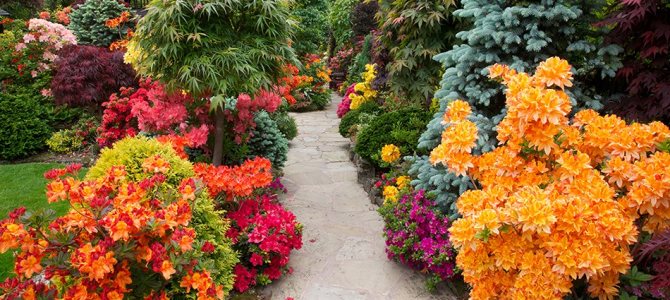

When choosing a rhododendron for your site, note that there are also tall varieties that, with proper care, can grow up to two or even three meters, both in height and in diameter. You understand perfectly well that it is very difficult to build heavy structures for such a giant. And you don't need to! The fact is that with age, the plant somehow hardens and its winter hardiness increases, and therefore in the future, shelter is not needed at all.
Someone might think that rhododendrons are too demanding, but believe me, the effort is worth it! All your efforts will be rewarded every spring with a bewitching flowering of indescribable beauty. You can find out about the most common winter-hardy varieties in the middle lane, familiarize yourself with the characteristics, and see their photos in our rhododendron catalog
.
Rhododendrons - a culture that is quite acceptable for growing in the Moscow region, the plants feel great and bloom in our gardens. However, the belief that deciduous rhododendrons do not need shelter is a myth. You need to cover all groups of these ornamental plants.
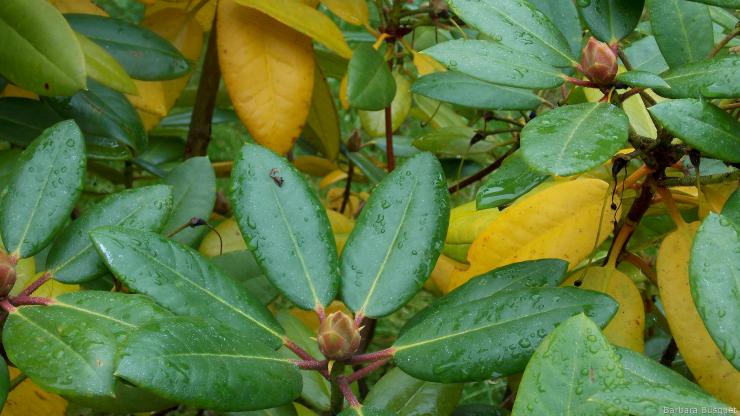

Deciduous, evergreen and semi-evergreen rhododendrons lay flower buds of the next year already in the fall. During the entire autumn season, flower buds swell and continue growing in order to amaze in the spring with the luxury of flowering. The main task of the gardener is to make every effort so that the plants come out of winter in the same form in which they were in the fall.
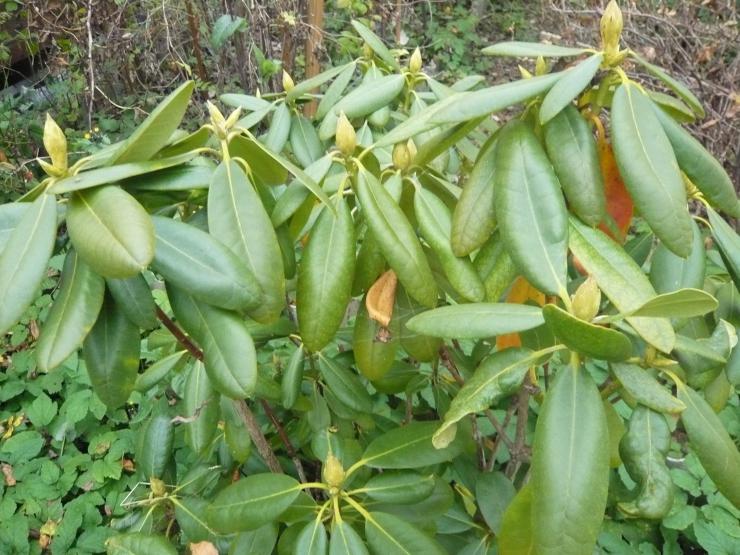

Photo: flower buds of rhododendrons
Preparing rhododendrons for winter
In preparation for winter, rhododendrons need feeding and watering. Fertilizers can only be made with phosphorus-potassium fertilizers, avoiding nitrogen-containing dressings. Fertilize rhododendrons in advance so that the plants have time to assimilate nutrients before the ground is frozen. Throughout autumn (until about mid-November), rhododendrons need regular watering with warm water, especially in the absence of rainfall.
Plant preparation
The timing of the shelter of shrubs depends on the characteristics of the variety or hybrid. Before covering the rhododendrons for the winter, it is worthwhile to carry out several preparatory techniques that will help dicotyledonous eukaryotes survive the cold.
Top dressing
The plant needs to replenish the supply of minerals even at the end of the season.The process of ontogenesis of the rudimentary shoot of rhododendron begins from mid-August to the end of September. In order for the shrub to please with lush flowering in spring after wintering, until the temperature drops sharply in the root zone of the plant, elements important for growth and photosynthesis must be present. Only when all substances necessary for growth are absorbed in autumn does the plant enter a dormant phase, reducing the rate of metabolic processes.
In order for all the processes necessary for entering the dormant phase to be completed on time, autumn dressings should not contain nitrogenous compounds that stimulate plant growth. In late autumn, with the onset of frost, granular fertilizers can be poured into the root zone of the bush:
- superphosphate - 25 g;
- potassium sulfate - 25 g;
- urea - 15 g.
During the winter, the granular substances will gradually dissolve, and with the onset of spring heat, they will be absorbed by the root system of the plant.
On a note!
Garden azalea feels very good when mulching the root zone in autumn with natural materials that will acidify the soil. The role of mulch can be performed by: needles of pine, spruce, thuja or juniper. And also just wood shavings mixed with a small amount of citric acid.
Pruning
The plant does not particularly need the formative shortening of the branches, since at the genetic level it has the growth of a symmetrical bush shape. Therefore, before the beginning of winter, at the garden azalea, only cutting of diseased and damaged branches should be carried out. The only reason for shortening the bush is its rejuvenation. The procedure is carried out with the loss of decorativeness and lush flowering of rhododendron.
In the fall, before the onset of frost, the shoots of the culture are cut 5 cm above the level of the dormant buds. After pruning, after 10-12 days, the dormant rudiments will begin to grow, and in the next season the decorativeness of the garden azalea will be restored. To prevent the penetration of infection, immediately sprinkle the cut areas with wood ash or grease with brilliant green.
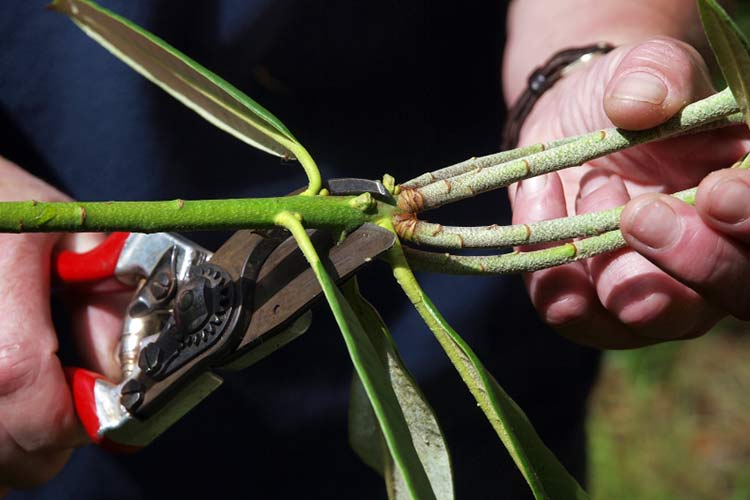

Treatment against diseases and pests
Rhododendrons, like all plants, have their own diseases and insect pests that can cause irreparable harm to the plant. Resistance to pathogens and insect parasites depends on the species and variety of plants. So, for example, evergreen varieties that grow in the sun are more susceptible to infections and pest attacks than those planted under the shade of trees. Emaciated plants are most susceptible to disease, therefore, throughout the season, rhododendrons need to create optimal conditions for development.
Before the start of wintering in late September and early October, it is worth spraying the plants with growth stimulants that will increase their immunity: Epin, Heteroauxin, Zircon. Before insulation with a covering material to prevent rot damage, treat the bushes with preparations: Fitosporin, Maxim, Fundazin, Effect, Previkur. To destroy the larvae of pests wintering on the foliage and in the soil under the plant, before warming, spray with insecticides: Aktara, Confidor Maxi, Oppercut, Aktellik.
On a note!
Some types of garden azalea have medicinal properties. However, most varieties contain toxins that specifically act on nerve cells, affecting nerve and neuromuscular tissues. Therefore, self-medication using rhododendron raw materials is strictly prohibited!
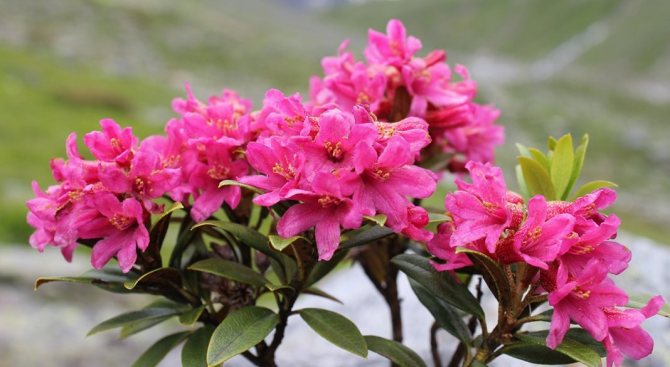

Possible mistakes
The main mistake is non-compliance with the rules for caring for an azalea in the fall:
- too dry air;
- it's hot in the room;
- there are sharp changes in temperature;
- the plant is exposed to direct sunlight;
- it lacks lighting;
- he lacks nutrients;
- feeding with nitrogen fertilizers and other substances that stimulate growth;
- too much or insufficient watering;
- watering with hard, unstable water;
- if the first signs of diseases or pests appear, you must immediately start treatment;
- pruning, pinching and transplanting without extreme need.
If you exclude these mistakes, your flower will be strong, with good immunity against diseases, flower buds will be laid in its stems, and soon it will thank you with magnificent flowering.
Fundamental rules
In order for the protection to last the entire winter season, consider these rules:
- The frame should not be too close to the plant.
- The arcs should be strong, about one centimeter thick, so as not to bend or break the branches.
- The structure must be well pressed to the ground for reliability.
- Shelter should be made with the onset of frost.
It is necessary to remove a frame house in cloudy weather and when the soil warms up slightly with the spring sun. Early removal of the material can cause sunburn on the leaves. In winter, evergreen varieties should also be spilled with water. And also to monitor the integrity of the frame and shake off a large amount of snow.
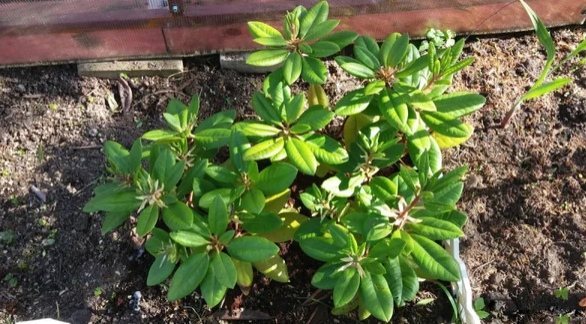

In order for the rhododendron to please with lovely flowers in the new season, it is worth taking good care of it, feeding it on time and be sure to cover it for the winter. Then the hedge will be a chic decoration for your garden.

